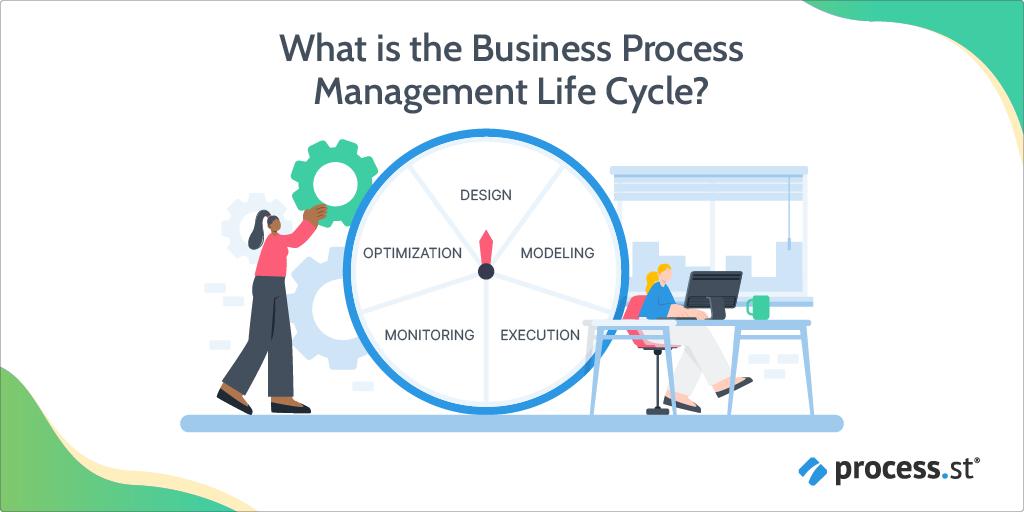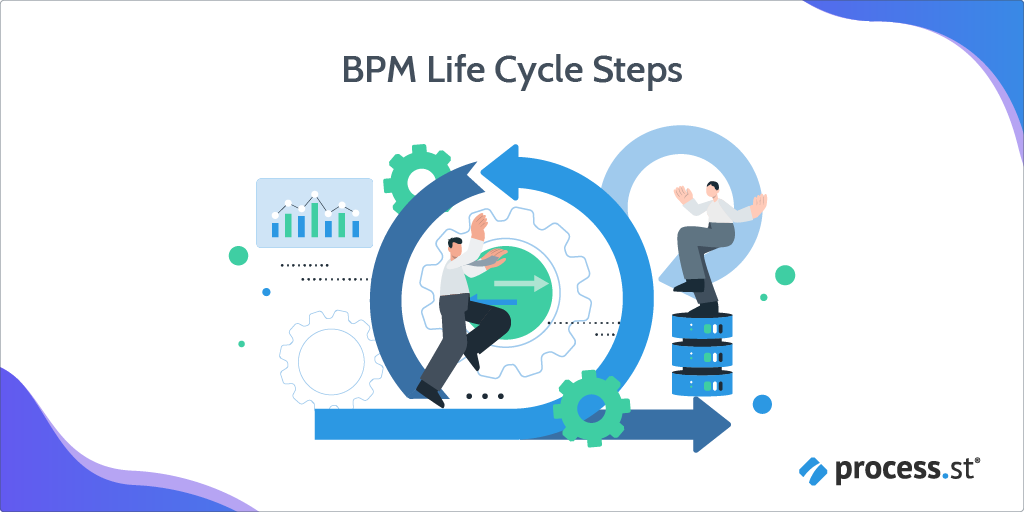Get work done right, and right-on-time with our industry leading BPM platform.
The Business Process Management Life Cycle (+ Examples)
The business world is fiercely competitive, so if you want to stay afloat, it’s crucial to manage processes efficiently and effectively. This is where business process management life cycle (BPM) comes in.
If your goal is to optimize processes and boost performance, a BPM may be the right tool for you.
But what is BPM?
In this blog post, I’ll explore the concept of BPM, its importance, and the key steps involved in the BPM life cycle.
By the end, you will have a better understanding of BPM and how to use it to improve the efficiency, quality, and customer satisfaction of your business.
So let’s begin!
What is the business process management life cycle?
Business process management is a popular approach many business owners take to manage their processes.
It involves identifying, designing, executing, monitoring, and continuously improving processes to achieve goals.
With the help of a BPM, you’ll be able to:
- streamline operations
- reduce costs
- improve quality
- enhance customer satisfaction
There are four stages of business process management that we will explore shortly. But if you are keen to learn more about this topic, check out our Complete Guide to Process Management.
Why is business process management important?
BPM is important for several reasons.
So let’s talk about the benefits of business process management.
It enhances process efficiency and effectiveness
When you streamline processes, you’ll start cutting costs, notice fewer errors, and improve the quality of your processes.
In turn, leading to increased customer satisfaction, loyalty, and in an increase in revenue.
Allows you to adapt to changing market conditions and customer needs
The BPM process enables you to respond quickly to shifts in the business environment.
The newly acquired agility will give you a competitive advantage in your industry and new clientele interested in your product.
Helps to comply with regulatory requirements and industry standards
Business process management ensures standardized processes.
With a BPM, you’ll reduce the risk of non-compliance and mitigate potential legal and financial risks.
What is the business process management life cycle?

A BPM life cycle is a framework that outlines the stages involved in managing a process from start to finish.
The BPM life cycle consists of stages that, if executed well, will take your business to the next level.
Here’s what you’ll want to do:
- Identify the process and define its goals and objectives
- Design the process flow, inputs, and outputs
- Specify the activities and tasks required to carry out the process
- Assign tasks to the appropriate stakeholders and provide them with resources
- Execute the process
- Monitor the process to identify any issues or areas for improvement
- Analyze the process performance using KPIs
- Optimize the process by identifying areas for improvement
- Monitor the process again to ensure that the changes have been effective
BPM life cycle steps

We now know the main stages of the BPM life cycle. Now let’s take a closer look at the steps you’ll want to take in more detail.
Stage 1: Design
This first stage lays the foundation for the rest of the BPM life cycle by setting the scope and boundaries of the process.
This stage involves:
- Identifying the process needed to be optimized
- Defining goals and requirements
- Determining the stakeholders that will be working on the process
- Defining the roles and responsibilities of each one
Stage 2: Modeling
The second stage takes care of creating a visual representation of the process.
This representation serves as a blueprint for the process and provides a common understanding of how the process works.
Some steps you may be taking here are:
- Defining the process flow
- Identifying the inputs and outputs
- Specifying the activities and tasks
Stage 3: Execution
This stage involves carrying out the process according to the model you pre-determined in stage 2.
For example:
- assigning tasks to the appropriate stakeholders
- providing them with the necessary resources
- monitoring their progress
In simple terms, the execution stage ensures that the process is carried out efficiently and effectively. It also assumes that everyone working on it is on the same page and knows how to handle the workload.
Stage 4: Monitoring
Monitoring is all about identifying any issues or areas that may need improvement.
You can monitor performance by measuring key performance indicators (KPIs) such as cycle time, throughput, and error rate.
This provides valuable feedback that you’ll later utilize to optimize the process and improve its performance.
Business process management life cycle examples
You may now be wondering how all this applies to your specific situation.
To help you find out, I’ve devised a list of some examples of business process management life cycle use cases:
Sales Process Management
Sales are complex and involve multiple stakeholders and activities.
The BPM life cycle can be used to manage the sales process from lead generation to order fulfillment.
By optimizing the sales process using BPM, you’ll not only improve efficiency but also increase customer satisfaction.
Customer Service Process Management
The customer service process is another important process that can benefit from BPM.
Why? Because it requires managing an array of things at the same time. Customer services often have to deal with customer requests, complaints, and inquiries simultaneously. So you want to ensure that these issues are resolved in a timely and efficient manner.
Using BPM to manage the customer service process, you’ll enhance responsiveness and reduce customer wait times.
Procurement Process Management
The procurement process concerns purchasing goods and services from suppliers.
You can use a BMP life cycle to manage the procurement process, from identifying the need for goods or services to paying suppliers.
This will result in stronger supplier relationships and increased procurement efficiency.
Hiring Process Management
The hiring process is one of many critical processes that can benefit from BPM.
From job posting to onboarding, BPM will make it easy to manage the hiring process, streamline the recruitment process, reduce recruitment costs, and improve the quality of new hires.
BPM life cycle will benefit you in many ways
If you follow the steps I outlined, a business process management life cycle will make your life much, much easier.
With it, you can design, model, execute, and monitor processes to ensure they meet your business goals.
Continuous improvement is key to the success of BPM, so embrace this approach, and you’ll be more likely to flourish.
Remember! Equipped with the right tools, you can unlock the full potential of your processes and achieve lasting success.







